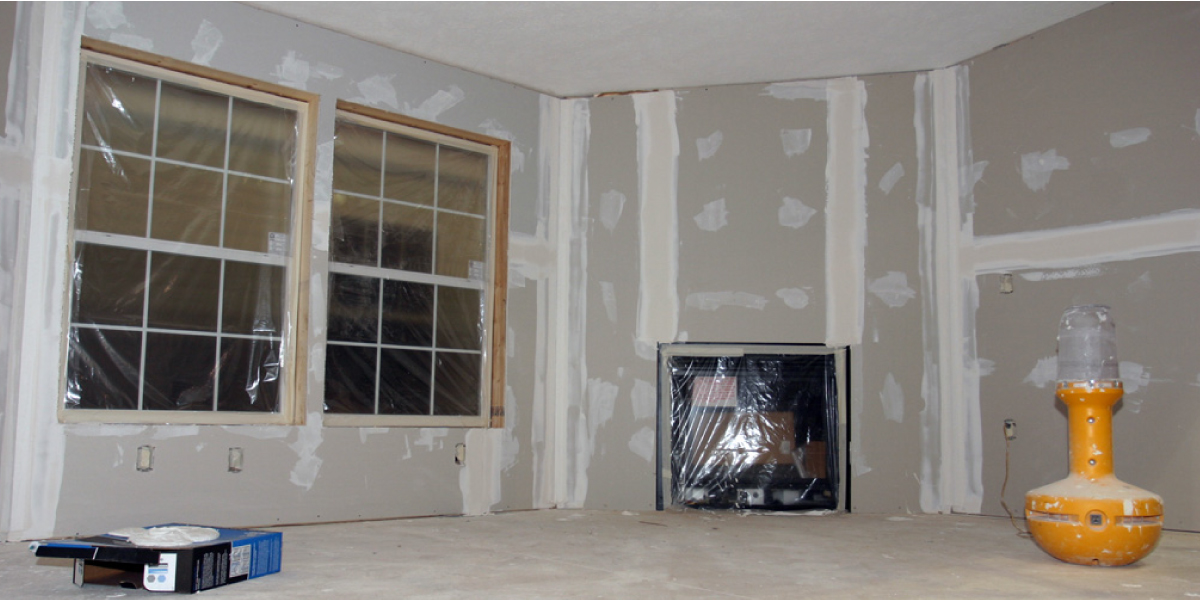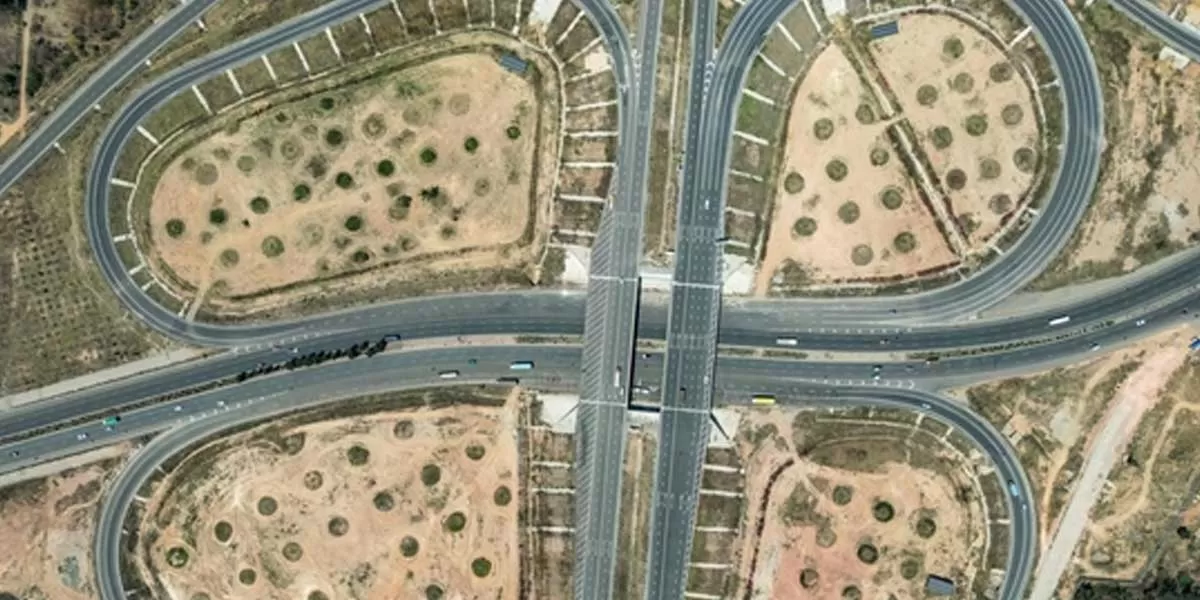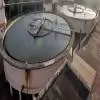In the previous article, we have looked into the nuances of plumbing and wiring in the house. In this section, we will take a detailed look at what are Drywalls? How to best fix it in our house and the tools and materials required for the same. Drywalls are an easy yet effective alternative to traditional plasters. A standard drywall panel is 4×8 inches. The drywall panels are available in many lengths (8-16 inches)and widths (48-54 inches).
Types of Drywalls
Now a wide variety of special-use drywalls are also available, including moisture or mould-resistant, aluminium, aluminium, fire-resistant, and abuse-resistant panels along with 1/4-in. Flexible panels, 1/2-in. High-strength ceiling panels and foil-backed panels. Lighter-weight drywall and a new type of drywall that takes volatile organic compounds (VOCs) out of the air, creating healthier environments, are recently very popular.
Why use drywall?
Here are a few benefits of using drywall instead of opting for a traditional plaster for your home:
Drywall panels are easily available and are easy to cut and install.
Drywall panels are flexible and sag-resistant.
Drywall panels are highly resistant to cracks when properly reinforced.
The drywall panels easily accept paints and other decorating materials.
IT eliminates excessive moisture during construction.
Non-combustible gypsum adds fire protection.
The dry walls have effective sound control.
In the upcoming section, let us look at how to execute an efficient drywall installation. The first step is to plan the job/ work effectively.
Planning the job
The owner must ensure that the material used is high quality and the installation is neat and precise to make the house look appealing. To ensure quality work, the owner must plan.
Once the structure is framed, measure it for the material.
Using the full palette of available sizes, you can cut waste and unnecessary seams to give it a smooth look.
Consider hanging the drywall horizontally on the wall as it reduces the seams by as much as 25%, compared to hanging it vertically. The seams are at a convenient height for taping, except for the 54-inch drywall panel.
Make sure other prior inspections are done before the drywall is hung and installed.
Make sure the plumbing and electrical rough-ups and insulation have been done before drywall installation.
Long panels are easier to tape and have a better finish, but they are heavy, so two people are required to hoist and hang the panel.
Once the plan is ready, you must list the tools required to install drywall in the following section.
Tools and Materials to install a drywall
There are different tools required during different stages of panel installation. Let us look at the various categories of tools and materials required during installation:
Drywall measuring and marking tools:
To measure and mark drywall, you will need a measuring tape, a couple of squares, and a scriber.
Measuring Tape: A 25ft tape measure is the optimum choice as it can measure a large room with little to zero bending or sagging without a helper. It will also accurately measure a small room. Measure the space correctly to help you get a better finish.
T-square-: A 4ft aluminium T-square is used for measuring and cutting the drywall.
Framing square: You can also use a 24-inch framing square for measuring and cutting the drywall. It is most useful for transferring measurements for small fixtures like electrical openings or heat ducts.
Chalk line: A chalk line is a tool used to mark straight lines, especially difficult to scribe with a tape measure or knife or a 4-ft. Square.
Scriber: A scriber is similar to a drafting compass, used to fit out of plumb, mark around wall openings or fit irregular surfaces like a wavy ceiling.
Drywall cutting tools:
Some of the drywall cutting tools are mentioned below:
Utility knife: A utility knife is combined with a 4-ft. square or marks left by a chalk line to make cuts across the full width.
Saw: Drywall saws have more “set” in them than a standard woodcutting handsaw. Hence sometimes, it is faster and easier to use than a utility knife. You can use the small, or the large drywall saw based on your requirements.
Drywall router: A drywall router is a specialised tool most suitable for cutting small openings in the drywall panel.
Drywall lifting tools:
Panel lifter: A panel lifter is operated by foot, so you can use both hands to attach the panel to the wall or ceiling.
Small pry bar: A small pry bar can also lift the panel off the floor. However, it requires using one or both hands.
T-support: For flat ceilings, a T-support is a convenient tool for holding a panel in place. This way, your hand is free for fastening.
Drywall lift: A drywall lift is easily available at rental tool stores. You must keep the drywall finished face towards the lift, and you can adjust the lift to various heights.
Step up benches or trestles: These can be used for reaching ceilings up to 10 ft high. The panel is lifted into place at a height. That can be held there with light head pressure, leaving both hands free to attach the panel.
Scaffold: A scaffold is a stable, adjustable, room-to-room platform. These scaffolds are adjustable at 6-10ft. Length and adjustable 6 ft in height.
Stilts: Stilts provide mobility to the workers, but they are not the most suitable or convenient tool.
Drywall fasteners and fastening tools:
Drywall is fastened using nails and screws. You will need a drywall nail hammer that looks like a hatchet for the nails, while most professionals use a drywall screw gun with screws. Screws are easy and convenient to use, especially with the screw gun, they hold the drywall and framing tighter, and the damage to the panel is comparatively much lesser. If you’re opting screws, you must choose the thread type based on the framing behind the drywall.
If you wish to use nails, prefer the rink shank nails over the plain nails as they must be 3/4th within the frame for better holding power. For added measures, you can also use a drywall adhesive to stick the drywall to the frame.
We have discussed the primary tools required to install drywall. Next, let’s focus on tools and techniques that will make the installation quicker and easier.
New methods and materials for drywall installation
There has been an evolution in hanging the drywall, making it easier and quicker to get the work done. Let us look at some of these materials and methods:
- Forgiving ceilings: Drywalls for ceilings in colder climates require a poly vapour or air barrier. Resilient channel prevents holes in the plastic by providing a framing layout.
- Better butt seams: Drywall backers pull in the butt edges of the panels to create subtle recesses to look like tapered-edge seams with few screw pops as the fasteners can be placed farther from the drywall’s edge.
- Improved adhesive: Use Polyurethane-based spray foam adhesives rather than caulk-gun dispensed adhesives, as they produce a uniform bead and have a superior hold, even to steel.
- OSB drywall backer: An OSB drywall backer turns a butt joint into a tapered joint. It is easy to finish and flat, so it’s nearly invisible even in bright light.
- Staying away from plates: Keep the backer away from the plates to allow the sheet to bend to accommodate the backer’s taper and the slightly different plane of the plates.
- Upgraded drywall router: Cordless drywall routers have replaced drywall saws as they are more efficient.
Once the drywall is installed, the work is still not complete. Let us look at the steps following the drywall hanging.
Taping the drywall
Taping drywall requires a trowel, a couple of taping knives, a roll of paper tape, and a pail of joint compound, traditionally. Now, new and better versions of hand and automatic taping tools have taken over.
Let us look at some of the new taping tools:
Hand taping tools
Taping knives: 1:6inch taping knives are used for taping seams and corners and covering fasteners. The narrow width knives are better for taping tight areas, whereas wider widths have a metal tip on the handle for resetting nail heads. Make sure the knife is stiff and has a little curve in the blade when viewed from head-on.Hawks: These are used to hold many joint compounds when working with a taping knife. If the mixing compound has a thin consistency, you can use a pan instead that can also be used as a mixing container.Curved or bevelled trowels: You must choose a curved trowel instead of a flat one as it allows more control on the amount of compound to be removed.
Wide straight-handled taping knives: These knives have a metal reinforcing strip at the back of the blade that you can use to embed the tape on seams when using automatic taping tools.
Automatic taping tools
Automatic taping tools gained popularity as they reduce the labour force to a minimum, and mechanical tools are available for every step in the taping process. Mechanical tools are expensive, but they increase productivity, and you can rent them instead of buying them for your work.
Since we have discussed taping tools in detail, we must look at another important aspect of the taping process, i.e., the joint compound.
Joint Compound
Some popular kinds of joint compounds are:
Drying type joint compound: It is available in pre-mix and powdered form and is one of the most popular drywall types. Most of these compounds are vinyl based and require enough drying time between coats.
Pre-mixed drying type joint compound has the advantage of factory-controlled consistency and is ready to use right from the bucket. These can be resealed and used again later. Powdered drying type joint compound needs to be mixed in water, other than that. It needs to be stored and used exactly like a pre-mixed drying type joint compound.
Setting type joint compound: These are only available in powdered form and harden before completely dry. However, they are comparatively harder to sand.
You must now have explicit knowledge and experience to do it yourself or hire a good contractor to hang the drywall. Now that we have detailed information about drywalling in the house, we will discuss different roofing components roofing components in detail in the next article.


















